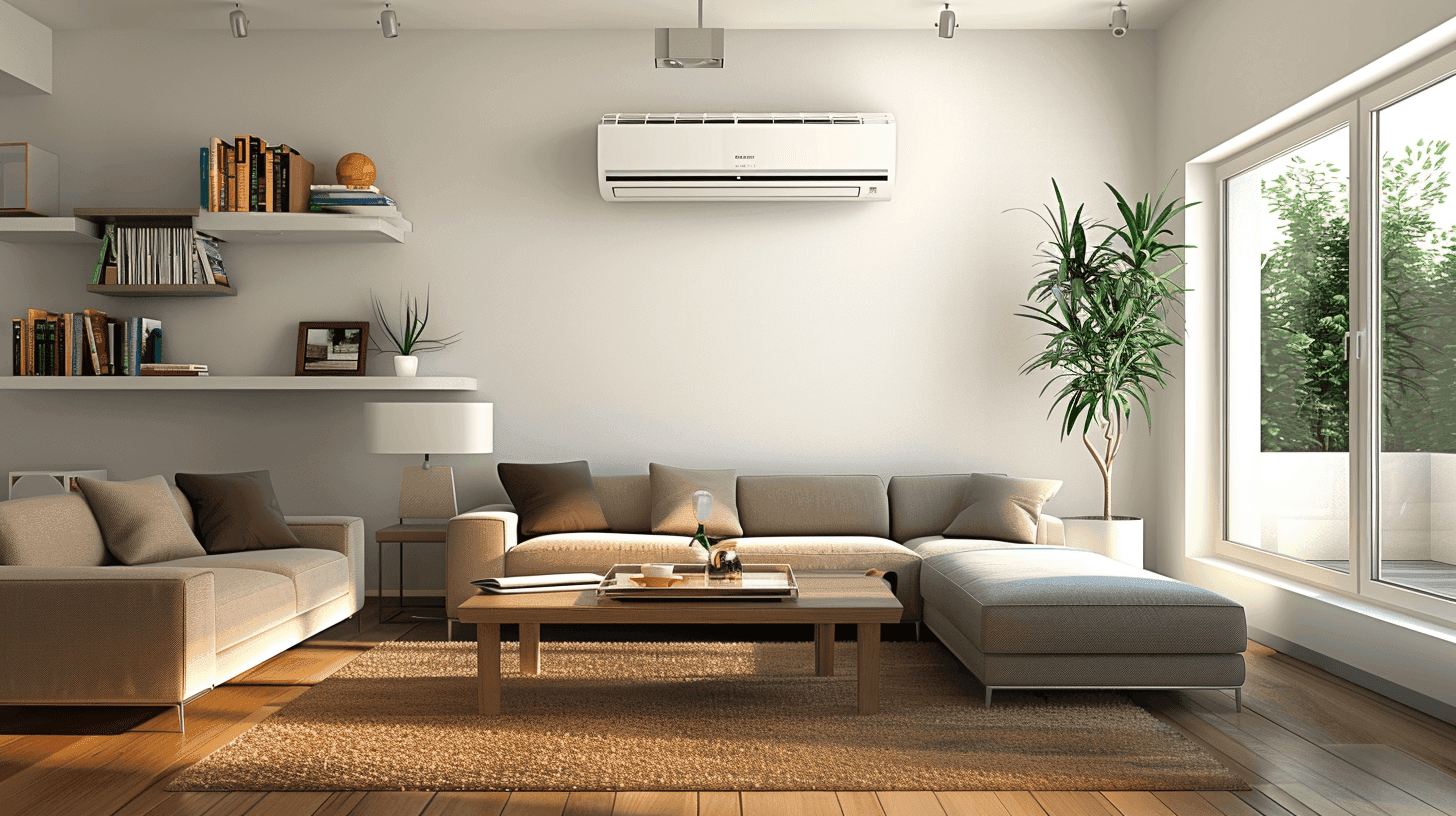Mini-Split vs. Window Unit: Breaking Down the Differences

Warmer weather isn’t far away – do you own an air conditioning system that’s ready to keep you cool and comfortable this spring and summer? When it comes to cooling your home efficiently, two popular alternatives to central air conditioners come to mind: a mini-split vs. a window unit.
Both mini-splits and window ACs offer solutions for keeping your living space comfortable, but they come with distinct features, benefits, and drawbacks. HVAC.com explores the differences between mini-split systems and window units to help you make an informed decision about which option is best suited for your budget and home comfort needs.
The Differences Between a Mini-Split vs. Window Unit
Functionality
As their name suggests, window air conditioners are self-contained systems that are installed directly in a window, or through a wall opening. They are designed to cool a single room.
Meanwhile, mini-split HVAC systems, also known as ductless mini-splits, consist of an outdoor compressor unit and one or more indoor air-handling units which are connected through a conduit that contains the refrigerant tubing, a condensate drain, and a power cable.
The indoor units are mounted on walls or ceilings and are ideal for cooling individual rooms or zones within a home. Many homeowners install mini-splits in rooms that are difficult to keep comfortable such as sunrooms and bonus rooms above garages.
Mini-splits, known for their quiet operation and energy efficiency, are also popular options to heat and cool rooms such as garages, basements, attics, and new home additions that are not connected to the existing ductwork infrastructure.
Capacity and Coverage
Window air conditioners typically provide cooling coverage to spaces between 100-500 square feet, depending on the system’s British Thermal Unit (BTU) capacity. The most common sizes for window air conditioners are 5,000 BTUs, suitable for cooling areas up to 150 square feet, and 8,000 BTUs, capable of cooling spaces up to 350 square feet.
Meanwhile, a single mini-split air conditioner can typically cover an area ranging from 300 to 1,500 square feet, depending on factors such as the unit’s BTU capacity, efficiency rating, and your area’s climate.

Lifespan
With regular maintenance, the average lifespan of a mini-split is about 15-20 years. Ductless mini-splits can achieve longer lifespans due to their simpler mechanical design, efficient operation, and lack of ductwork, which is prone to wear and tear and air leakage.
On the other hand, window air conditioners typically have a shorter lifespan of about 8 to 12 years. Factors that can influence a window AC’s lifespan include maintenance, usage frequently, and environmental factors such as moisture.
Overall Costs
One of the primary disadvantages of installing a ductless mini-split is its higher upfront costs. According to the U.S. Department of Energy, mini-splits cost about $1,500 to $2,000 per ton of cooling capacity, which can be twice as much as window units of similar capacity and 30% more than central systems. Each mini-split can range in price between $150 to over $1,000, based on its brand, size, and additional features.
Efficiency
In terms of energy efficiency, mini-splits win hands down due to advanced technology including variable-speed fans and sophisticated compressors. Although a ductless mini-split can be significantly more expensive than a window AC, you’ll potentially see lower energy consumption and reduced utility bills.
Cooling vs. Heating and Cooling
Another option to consider is whether the room requires heating as well. If you plan to use the space during the cold season, a mini-split offers the advantage of providing both heating and cooling functionalities, making it a versatile year-round solution.
Installation
Mini-splits typically require professional installation, including mounting the indoor unit on a wall and connecting it to an outdoor compressor unit. In contrast, window AC units are much easier to install, requiring only mounting in a window frame. This makes installing window units a popular DIY project.
Maintenance
The maintenance requirements for a ductless mini-split are more comprehensive than a window unit. If you use your mini-split for cooling and heating, professional maintenance should be performed twice per year – once before the cooling season and again before the heating season. Its filters should be cleaned every 1-3 months, or according to the manufacturer’s guidelines.
Window AC maintenance typically involves cleaning or replacing the air filter regularly and ensuring that the unit’s exterior and vents remain free of dust and debris. The DOE recommends inspecting the seal between the window frame and air conditioner at the start of each cooling season to ensure there are no gaps that can allow cool air to escape and moisture to come inside.
Aesthetics
Mini-splits are considered more aesthetically pleasing because the indoor units can be mounted on the ceiling and wall, leaving the exterior of the home largely unchanged. Some manufacturers offer sleek designs that blend in with your home decor. Window AC units, meanwhile, can be bulky and can obstruct views and natural light because they are installed directly in windows.
Choosing Between a Mini-Split and Window Unit
Choosing between a mini-split vs a window unit boils down to several factors including your cooling needs, budget, and available installation options. If you’re looking for a budget-friendly option to cool a very small space during the summer, a window unit may be an ideal choice.
However, if you need to cool a larger area or multiple zones within your home, consider a mini-split. Ductless mini-splits are more expensive to install, but they last up to twice as long, are more energy efficient, and can provide both heating and cooling.